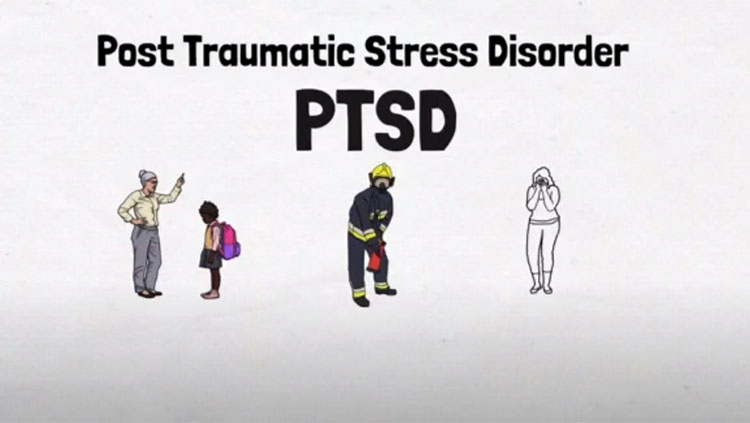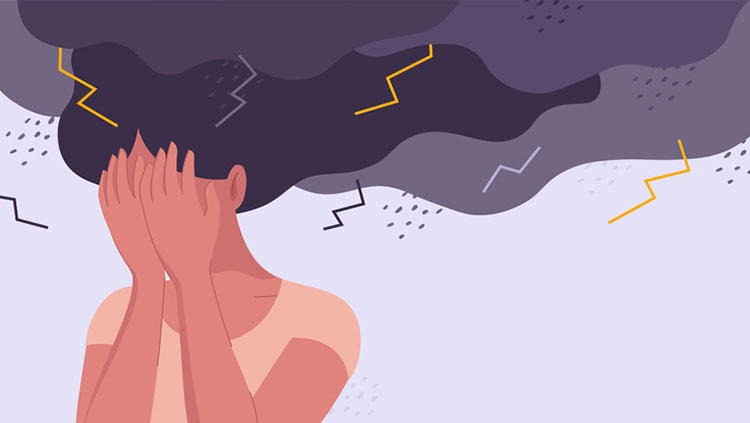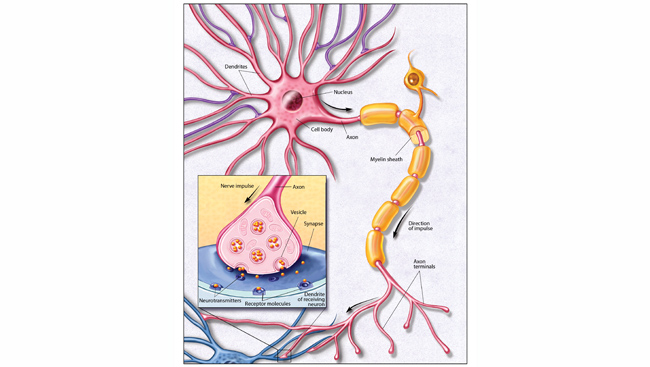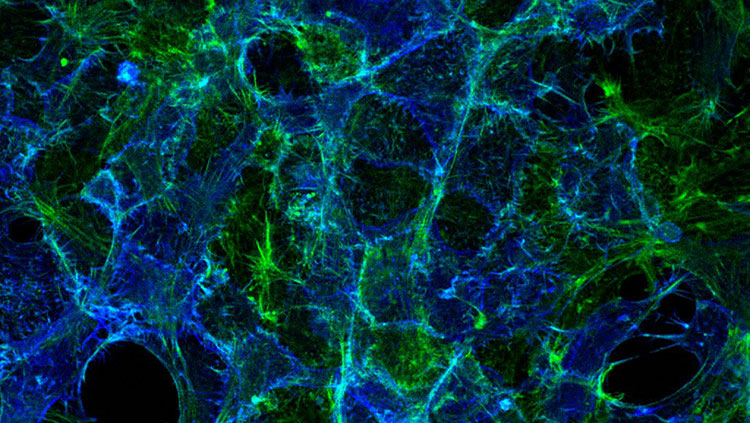Mental Illness, Violence, and Stigma: The Need for Accuracy in the Media
- Published15 Sep 2016
- Reviewed15 Sep 2016
- Source The Dana Foundation
How tightly is violence tied to mental illness? Not as tight as US journalism makes it appear, researchers say.
Over the past several decades, the scientific community has learned a great deal about the links between different neuropsychiatric conditions, including schizophrenia and bipolar disorder, and the risk of violent behavior towards others. But that understanding apparently has not trickled down to the popular press: Many scientists have criticized books and television depictions of mental illness for perpetuating unfair stereotypes of mental health conditions—as well as propagating stigma. Such depictions are not limited to imaginative fiction: News stories too often link mental illness and violent acts as well. A new study from the Johns Hopkins Bloomberg School of Public Health suggests that nearly 40 percent of stories in a random sample of US press regarding mental illness directly connected mental health conditions to events of interpersonal violence.
Violence and mental illness
On the morning of Monday, July 25, 2016, I typed the words “mental illness” and “violence” into the search bar on the New York Times website. The top three results included “Munich Killer Was Troubled, but Had No Terrorist Ties, Germany Says,” “Spy Agencies Struggle to Spot Threats From Lone, Mentally Ill Attackers,” and “The Murky Role of Mental Illness in Extremism, Terror.” My local Houston KHOU.com news website returned results like “Mother charged in fatal stabbing of her four children,” and “4 shot, 1 critical in Bus Station Shooting.” Emma (Beth) McGinty, a health policy and management researcher at the Bloomberg School of Public Health, says that many news stories suggest that there is a strong link between acts of interpersonal violence, or violence directed towards other people, and mental health conditions like schizophrenia, depression, and bipolar disorder.
“Over the past few decades, there’s been a lot of national dialogue concerning mental illness and violence and how the two are connected—particularly when are talking about the high-profile mass shootings we’ve had, and continue to have, in the United States,” she says. “And this dialogue, and the news stories that surround it, really seem to perpetuate a link between mental illness and violence.”
But how connected are the two? Seena Fazel, a psychiatrist at the University of Oxford in the United Kingdom, has spent his career studying the link between the two and the implications that link may hold for the law and public policy. His research, as well as that of others, has suggested that there is a connection, albeit not as significant of one as the public might think.
“Some clinicians and patient advocacy groups argue that there isn’t much of an association—and any that we might see was mainly explained by social factors,” he says. But when they accounted for those social factors in their research, they found that there was a small but measurable association.
“In schizophrenia spectrum disorders after five years of diagnosis, the absolute rates for being convicted of a violent crime are around 7 percent,” says Fazel. “Bipolar disorder is about 3 percent, and then depression is about 2 percent. They’re not insignificant. But the vast majority of people with these illnesses are not violent and will never commit a violent offense.”
McGinty says that the overall rate of interpersonal violence is reported to be about 2 percent--but such statistics don’t differentiate between perpetrators who have or have not been diagnosed with a mental illness. She also notes that research studies suggest that people with mental health disorders are actually much more likely to be the victim of a violent crime than a perpetrator—in fact, those with mental illness are 10 times more likely to be victimized. These statistics, McGinty argues, is why it’s so important for mental health to be accurately reported in the media.
“The research suggests that it’s really a relatively small link between mental illness and interpersonal violence,” she says. “So understanding how the news media is covering mental illness, and how that might contribute to the national dialogue we’re having, is important to understanding whether or not this is a problem, and how it might be contributing to problems of stigma.”
Stigma, defined by Merriam-Webster as “a set of negative and often unfair beliefs that a society or group of people have about something,” is a huge concern in the mental health treatment community. “Doctors, nurses, and others who work in mental health clinics are very aware of the effects of stigma on people with mental illness—for instance, having a mental illness often makes it difficult to find employment and it can restrict housing opportunities, for example,” says Fazel. “So many are concerned that having a message that mentally ill people are dangerous will further stigmatize the population and limit opportunities for those people to seek help and find recovery.”
News and stigma
To better understand reporting practices, McGinty and colleagues analyzed a random sample of 400 news stories about mental illness that appeared in 11 widely-consumed news outlets over the past two decades. The group coded each of these stories to highlight the content of each stories, including causes and consequences of mental health conditions. They found that a high proportion of these stories, about 40 percent, linked mental illness and interpersonal violence. They also found 30 percent of stories linked mental illness with suicide—and that only about 14 percent of stories discussed successful treatment. McGinty says what most surprised her was the lack of discussion about successful treatment—and that there was little change in how mental illness was described over the 20-year period of stories analyzed.
“Over the past 20 years, we’ve had some major advances in the treatment of serious mental illness. We’ve had major changes to the mental health service system, with health care reform and insurance parity,” she says. “So I expected that we’d see more talk about successful treatment, effective services, and changing policies in the latter half of our study period. We didn’t. And this is important: We know that news media coverage linking mental illness and violence increases the stigma towards individuals with mental illness. On the other hand, stories talking about successful treatment and recovery could decrease stigma and improve public attitudes. There’s an opportunity here that is really being missed.”
Three years ago, the Associated Press adopted specific guidelines for reporting on mental illness, says Bob Carolla, a spokesperson for the National Alliance on Mental Illness (NAMI). These include not speculating that mental illness is a factor in a violent crime or printing unsubstantiated statements attributing mental illness to a violent crime. McGinty found such speculations were common in many of the stories her study examined.
While such guidelines are a positive and important step, McGinty says they haven’t seemed to change the way we report on mental illness and violence to date. “If I’m an optimist, maybe in 10 years we’ll pick up some changes as the result of those guidelines,” she says.
A need for accuracy
McGinty say her study offers two important take-home points for news reporters, as well as people who may be a source for news stories regarding mental illness. “Often, in news coverage a link between mental illness and the scariest kinds of violence is hypothesized or speculated about in the absence of actual evidence. It’s just become part of our dialogue now—and we really need to stop doing it,” she says. “The other thing is that we need to talk more about successful treatment and balance all the violent portrayals with stories about people who enter treatment, manage their condition, and go on to live healthy and productive lives.”
While Fazel agrees, he also says it’s important that clinicians and reporters also describe the actual links between mental illness and violence. Pretending that violence is never linked to some of these disorders does the public a disservice as well.
“It is important for both clinicians and carers to really understand the truth behind this link. And to understand who is at more risk for violence and all the ways violence can be prevented in those who may be most at risk,” he says.
He agrees with McGinty that reporters should avoid speculation about mental illness—and that it is important for reporters to better understand the studies underlying the statistics when it comes to the links between mental health and interpersonal violence.
“Otherwise, when violence does happen and it does involve mental illness, it’s reported incorrectly and in a sensationalistic way. We need to talk about it in a balanced, informative way that can direct policy to where we can properly assess and treat individuals that may be at higher risk for violence,” he says. “An important part of addressing stigma is actually facing up to the evidence and being transparent with patients, carers, and the wider population about the real risk and what we can do to minimize it.”
- Kayt Sukel
CONTENT PROVIDED BY
The Dana Foundation is a private philanthropic organization that supports brain research through grants and educates the public about the successes and potential of brain research.


















